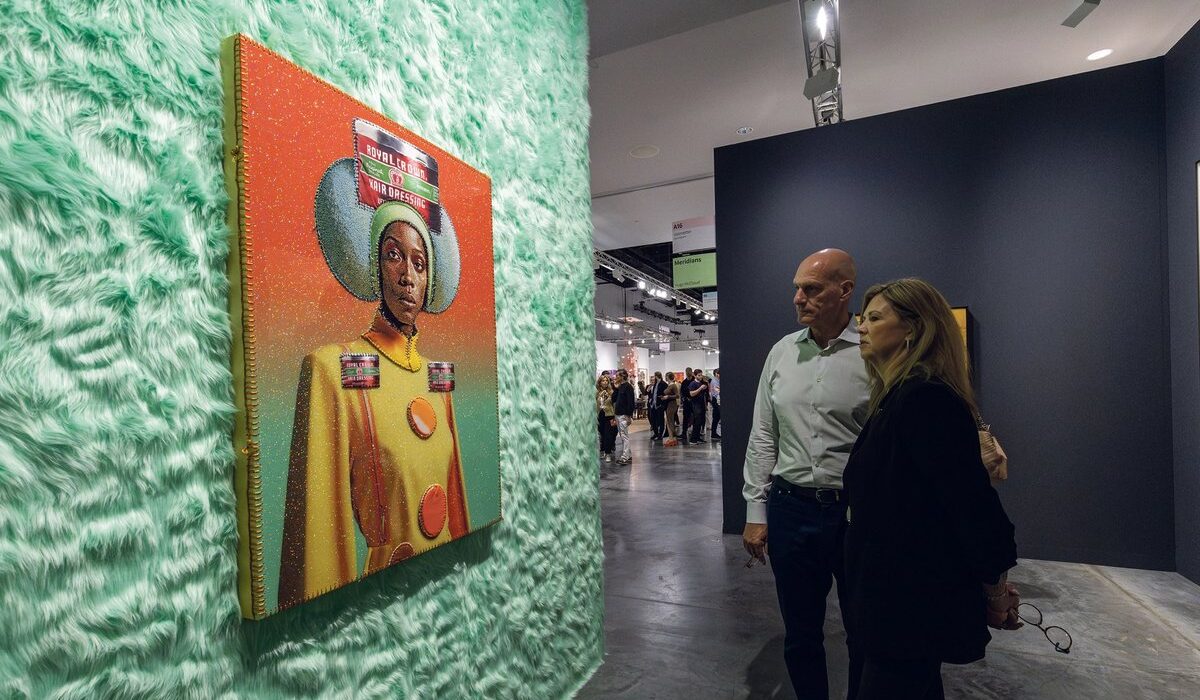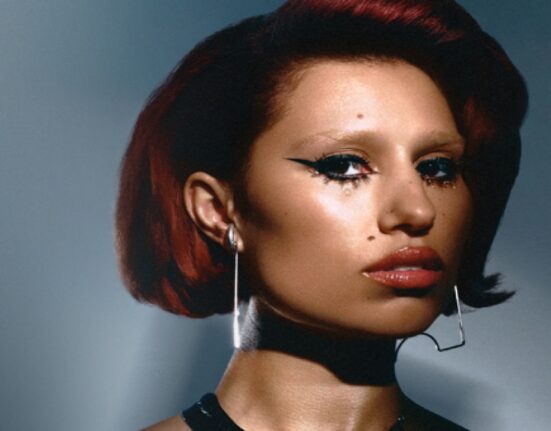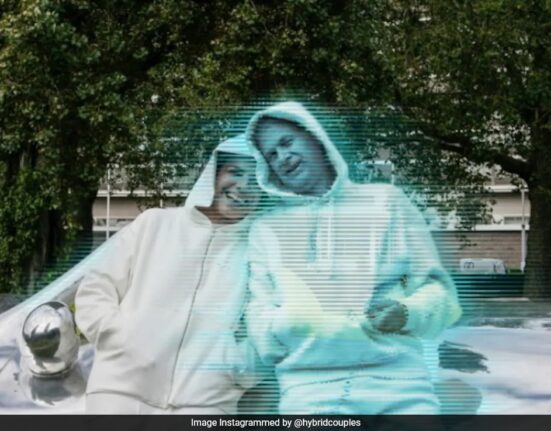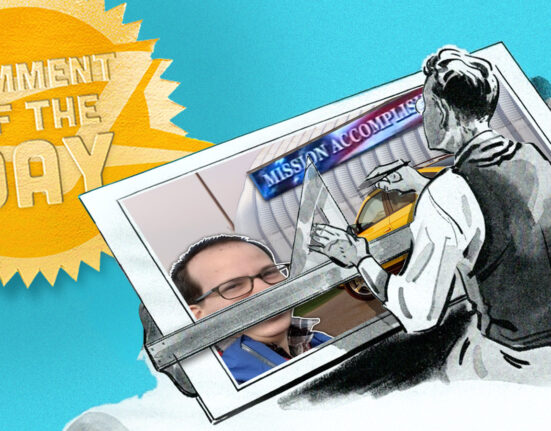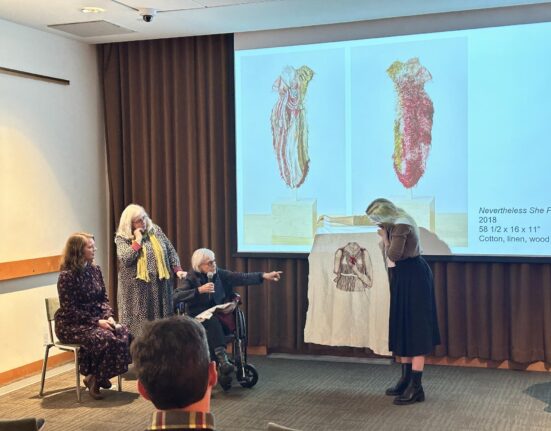María Elena Ortiz is a trailblazing curator at the Modern Art Museum of Fort Worth (the Modern), but she also has close ties to South Florida. Previously, she was a curator at Pérez Art Museum Miami, where she helped to diversify the collection: establishing the Caribbean Cultural Institute (a platform dedicated to Caribbean art) and acquiring works by Simone Leigh and Bony Ramirez, among others. Next year, Ortiz’s new group show Surrealism and Us: Caribbean and African Diasporic Art Since 1940 opens at the Modern. It will, she says, expand on “how Caribbean and Black artists sparked a modern avant-garde” and show “the effervescent creativity of Caribbean and Black artists and transatlantic networks”. She showed us some of her highlights from Art Basel in Miami Beach.
April Bey, COLONIAL SWAG: Not Conceited, CONVINCED! (2023), Vielmetter Los Angeles
April Bey is “really interested in the beauty” of the Black figure, “but also traditions of Black culture”, Ortiz says. “Here, she has featured Royal Crown, a product that some Black women use in their hair—and, of course, the title speaks of colonialisation”.
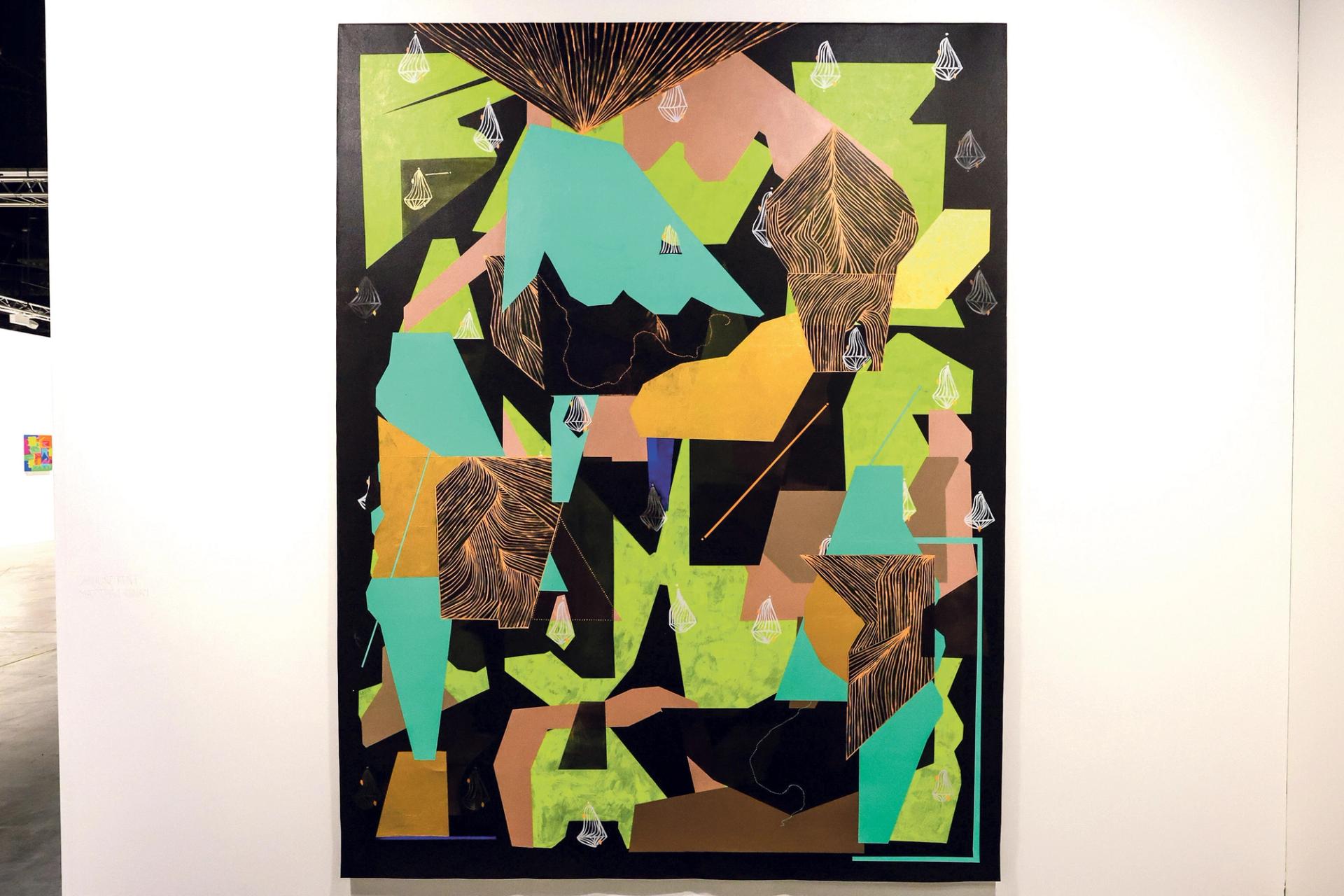
Caroline Kent, large feelings hidden in mountains / in the palms of our hands touching (2023) © Liliana Mora
Caroline Kent, large feelings hidden in mountains / in the palms of our hands touching (2023), Casey Kaplan
This Chicago-based artist is known for her abstract work that explores subjects such as translation, while often reflecting the influence of her Mexican heritage. “She uses similar motifs to create her own visual language, which is partly geometric, partly non-geometric,” Ortiz says. “She’s very much interested in neo-concrete poetry too.”

Hector Dionicio Mendoza, Hercules / El Mundo (2019-23) © Liliana Mora
Hector Dionicio Mendoza, Hercules / El Mundo (2019-23), Luis De Jesus Los Angeles
The Mexican American artist Hector Dionicio Mendoza creates work that deals with “migration and futuristic styles, but also thinks about mythology”, Ortiz says. This sculpture depicts a figure with wooden legs carrying a globe-like object. “The artist is playing with the motif of aliens, as immigrants are called ‘aliens’ in this country,” Ortiz adds.
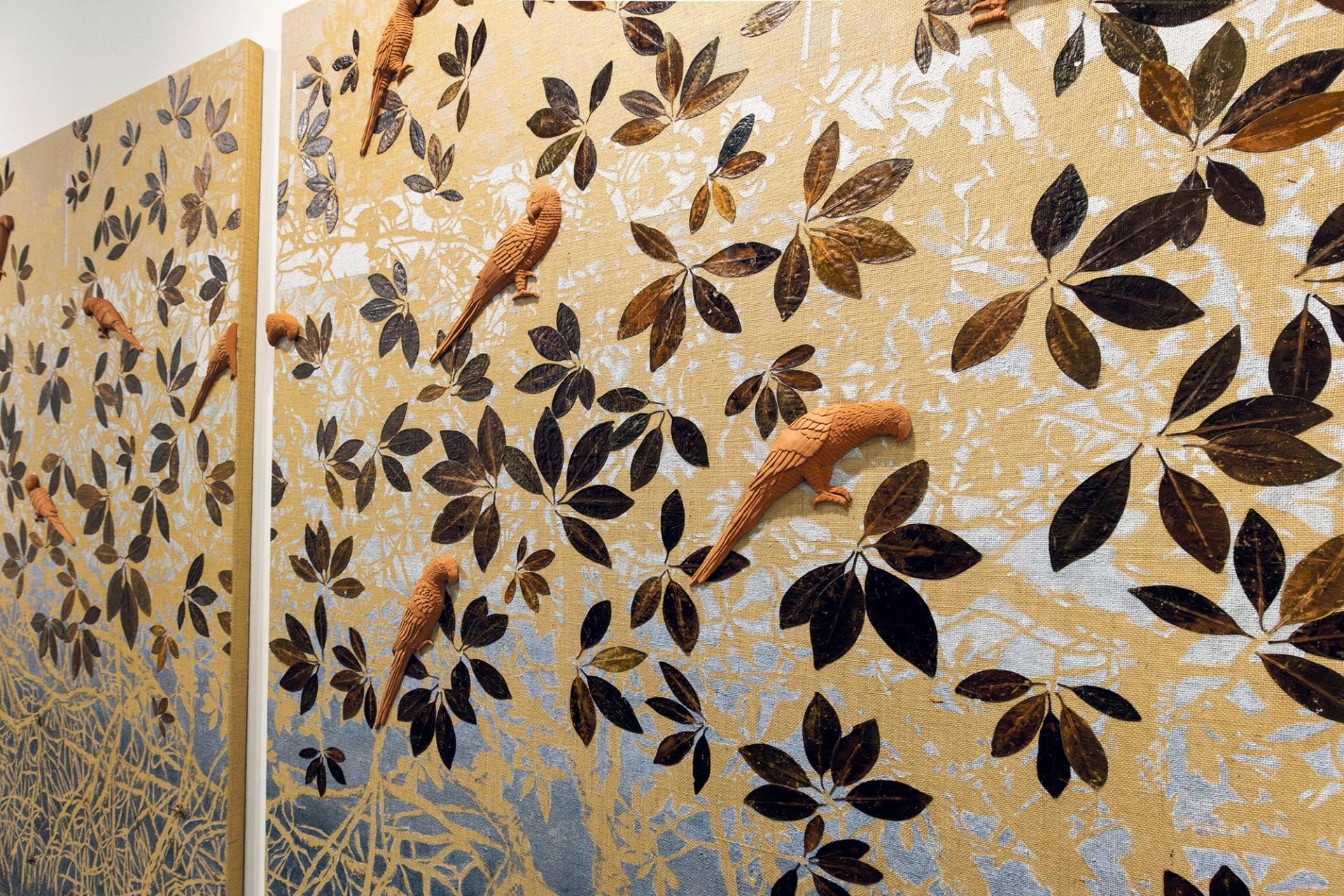
Daniel Otero Torres, Los abrazos del viento (2023) © Liliana Mora
Daniel Otero Torres, Los abrazos del viento (2023), Mor Charpentier
Daniel Otero Torres uses a range of media—from painting to ceramics and drawing—to explore themes such as
ecology and histories of displacement and colonialisation. In this work, he is “talking about the politics of a landscape that has been historically used by Afro-descendant communities” and “the politics of a space that is so beautiful yet so contested,” Ortiz says. Its washed-out composition is filled with images of animal life but presents a scene that feels “unstable, with lusciousness having been removed,” she adds. “It almost looks like a fossil.”

Lynda Benglis, Striking Cobra (2020) © Liliana Mora
Lynda Benglis, Striking Cobra (2020), Mendes Wood DM
Lynda Benglis represents “an alternative to a male-dominated sculpture tradition”, Ortiz says. With works that frequently appear to morph and melt, Benglis pushes the boundaries of her medium. In this case, Ortiz adds, the artist seems to be showing off how deceptively “fluid” bronze can be.

Tania Candiani, Medellin (2022) © Liliana Mora
Tania Candiani, Medellin (2022), Instituto de Visión
In this series, the Mexican artist Tania Candiani is “looking at different protests and social moments in which women have been protagonists reacting against femicide and other precarious moments in Mexico”, Ortiz says. The outline, created using cotton thread, is simple—and the colour palette is pared back—yet the content remains extremely “powerful and striking”.

Jeffrey Gibson, THE STARS ARE OUR ANCESTORS (2022) © Liliana Mora
Jeffrey Gibson, THE STARS ARE OUR
ANCESTORS (2022), Sikkema Jenkins & Co.
Jeffrey Gibson, who is of Choctaw and Cherokee descent, is to represent the US at the 2024 Venice Biennale. In this vibrant work, featuring beads, acrylic felt, crystal and other materials, the artist “references his ancestral culture as well as some LGBTQ+ ideas”, Ortiz says.

